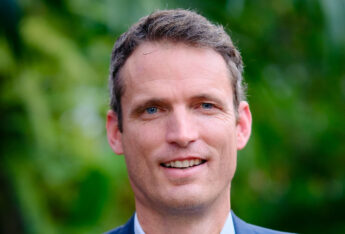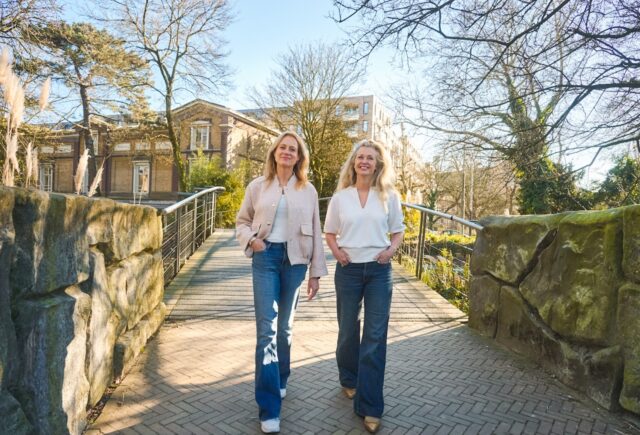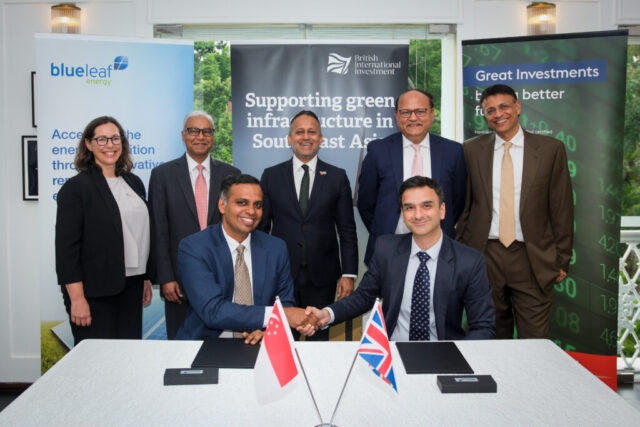Attracting public market investment to sub-Saharan Africa’s renewable energy sector is challenging. UK development programme MOBILIST is working with South African fund manager Revego to make the concept more attractive.

Sub-Saharan Africa’s renewable energy transition is under way, presenting a huge opportunity for investors if the economics can be made to stack up – an opportunity that could total $193bn (€172.8bn) over the 2023-31 period, according to new research.
Support from government, development finance institutions (DFIs) and multilateral development banks (MDBs), working with specialised project financiers and impact investors, has helped kickstart what is still perceived to be a high-risk sector for investors. But this approach can only go so far in raising the funding needed.
Turning wishful thinking into reality requires a shift in where the money is coming from. Investment in Africa’s renewable energy transition needs to go mainstream.
“If you’re thinking of crowding in private investment, you need to think about where the investors are, and of course, they’re in public markets by a landslide,” Dave Portmann a Cape Town-based partner at Eighteen East Capital, told Impact Investor.
Sub-Saharan Africa has sizeable stock markets, such as those in Johannesburg, Lagos, and Nairobi. But these are yet to provide low-risk listed vehicles of the type needed to attract large-scale funding from big institutional investors such as pension funds to renewables and other infrastructure projects.

Portmann is working with UK-government-backed programme MOBILIST to help change this situation. MOBILIST – short for Mobilising Institutional Capital Through Listed Product Structures – supports the development and listing of emerging market investment products related to climate change and other developmental challenges.
Unlocking investment
One concept MOBILIST is championing is the adoption in Africa of the listed “yieldco” model. Yieldcos are created through the acquisition and pooling of fully operational assets, such as solar and windfarms, into a company which can then be marketed to investors seeking low-risk steady returns, underpinned by long-term stable income generated by power sales. When listed on a stock exchange, they are similar in structure to REITs – Real Estate Investment Trusts – which pool real estate assets, and they are commonly deployed elsewhere in the world to attract investment to renewables.
Yieldcos remove a major stumbling block for renewables fund-raising in Africa by protecting investors from the higher risks associated with the early development stage of wind and solar projects on the continent, where DFI and MDB involvement via guarantees, co-investment and other forms of risk sharing are often a prerequisite for mobilisation of further private capital
Crucially, selling off operational assets to yieldcos also releases capital back to the DFIs and MDBs with stakes in those projects that could otherwise remain tied up for decades, allowing it to be reinvested into new renewable energy projects.
Developing a listed yieldco could be a win-win solution, but public market investors in Africa have needed to be convinced. When South African-based Revego Fund Managers was considering listing the continent’s first renewables-based yieldco on the Johannesburg Stock Exchange (JSE) in 2021, it received market feedback suggesting the fund had yet to achieve sufficient scale to overcome institutional investors’ concerns over liquidity, according to a research note published in July.
The yieldco, known as the Revego Africa Energy Fund, pools solar and wind investments in South Africa, sub-Saharan Africa’s largest and most dynamic renewables market. It has already attracted private investment, and currently holds around ZAR2bn (€100m) worth of assets. Cornerstone investors include Investec Bank, Eskom Pension and Provident Fund, and UK Climate Investments, which is a joint venture between the UK government and Macquarie Group’s Green Investment Group.
Convincing investors
Revego and MOBILIST are now collaborating on how to win the trust of investors and build up the necessary scale to achieve a public listing. As part of that effort, they commissioned research from consultancy Wood Mackenzie to highlight the potential size of the investment opportunity in solar, wind and other renewable energy assets across Africa and emphasise the important role of secondary markets in mobilizing that investment. The findings – outlined in the July research note – include the eye-catching estimates that the total addressable market for sub-Saharan Africa’s renewable energy transition could reach $193bn over the period 2023-2031, and that indicative internal rates of return for new built utility-scale assets could be some 15-21%.
Portmann said public market investors in Africa should take reassurance from the relatively strong returns already being generated by renewable assets on the continent, notably South Africa, where they have typically outperformed sovereign bond yields.
He also points to the rapid development of secondary market investment in renewable energy on the London Stock Exchange (LSE) as an example of what could be achieved using yieldco-type structures, in that case so-called renewable energy investment trusts.
“There was not one single renewable energy investment trust on the LSE until Greencoat UK Wind listed in 2013. Now it has a market cap north of $3bn and there are around 20 of these trusts giving investors access to mainly OECD country renewable assets,” he said.
Portmann is not suggesting investment conditions are as favourable on Africa’s leading stock exchanges as they are in Europe, but says it provides an example of what can happen once something is proved to work.
“If you can facilitate these precedent-setting transactions, then you create opportunities for price discovery, you create education opportunities and you further the concept of integrating development assets into capital markets,” he said.
The task for MOBILIST and Revego is to convince Africa’s pension funds and other big institutional investors that they have a product that is sufficiently “oven ready” to persuade them to look beyond traditional long-term investment safe havens such as government bond issues, Portmann said
That means providing a large enough pool of assets within an investment vehicle to lower the risk profile and then structuring the vehicle to meet the needs of institutional investors.
DFIs, MDBs and state institutions have important roles to play throughout the product development process, Portmann said. They can help finance the development of assets in the first place, and then enable third party investors such as yieldcos to take them on by being prepared to sell their stakes. They can also offer technical assistance to yieldco sponsors of the type being offered by MOBILIST, and potentially provide cornerstone investments for yieldcos to smooth the course of the IPOs.
The value of financial support at the listing stage is underlined by the UK government’s cornerstone £50m investment in Greencoat’s IPO in 2013, selling its 10.8% stake for a similar amount two years later once the fund was firmly established.
“By creating these products that institutions like pension funds can invest in you are dramatically increasing the multiplier effect of that capital,” Portmann said. “When it goes into government paper, it’s helping the government fund its own budget, but it’s not creating economic activity directly on the ground. If it goes into infrastructure, it’s creating jobs, it’s lowering costs and improving services, and it’s facilitating the growth and diversification of local markets.”





